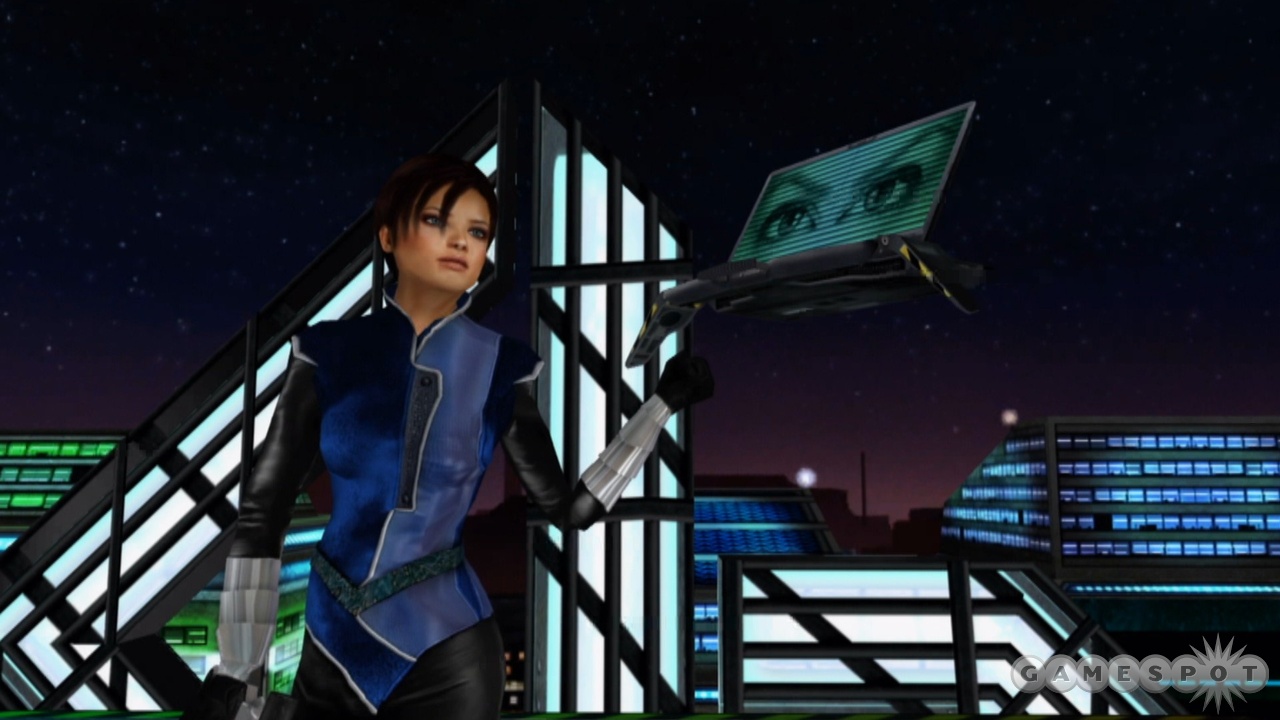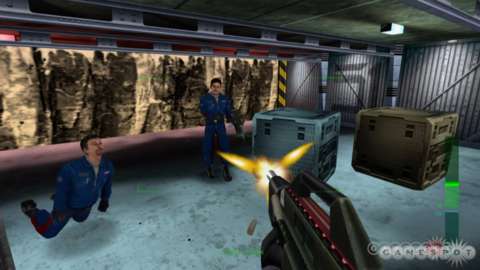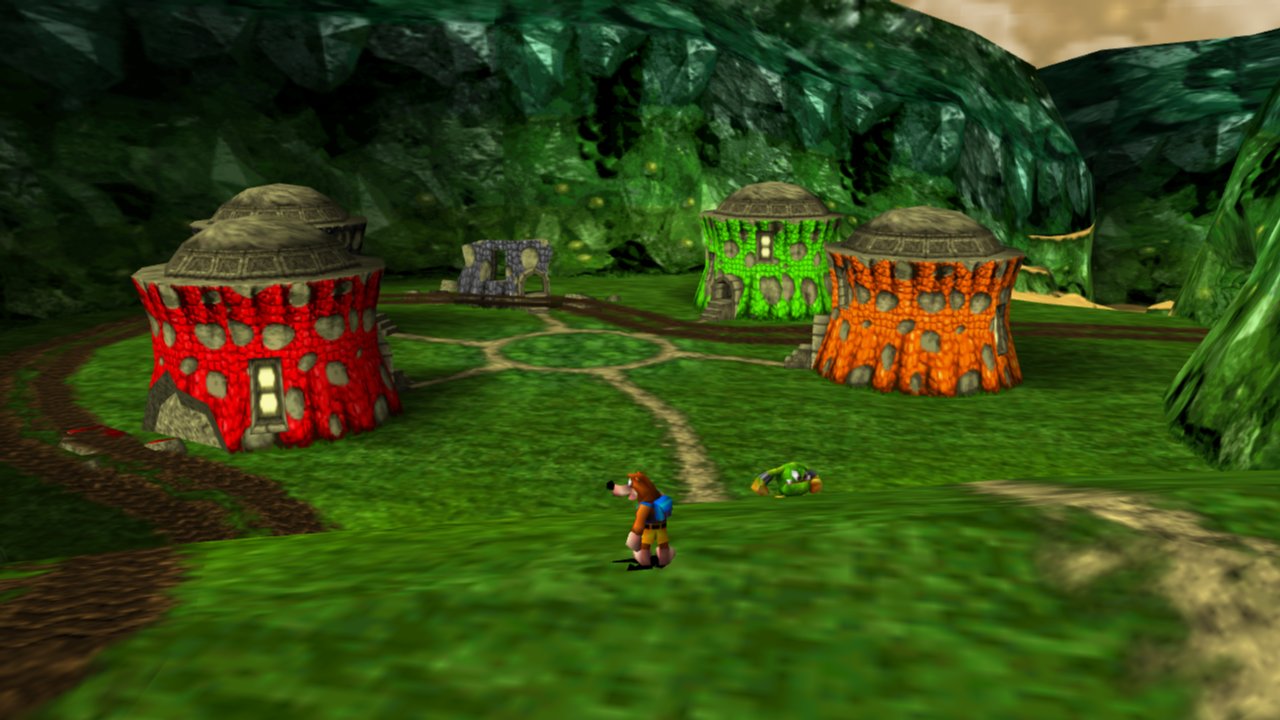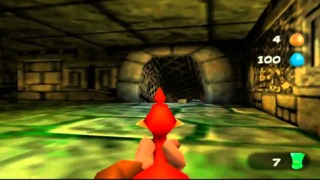What Was Rare's Best Year?
Rare is responsible for some of our most fondly remembered games--but what year did the developer hit its peak? And what is the essence of a Rare game?

Today marks the 15th anniversary of the release of Perfect Dark--Rare's spiritual sequel to GoldenEye 007--considered to be one of the best games released on the Nintendo 64. At the time, its scope and depth was astounding, and even now we're only just seeing some of its ideas return to modern first-person shooters. But 2000 wasn't just a year about Perfect Dark for Rare; the developer also released Banjo-Tooie--the sequel to its colourful mascot platformer, Banjo Kazooie, which expanded upon the Super Mario 64 formula in interesting and creative ways.
For me, both Perfect Dark and Banjo-Tooie represent the core of what made a great Rare game, and that they both released in 2000 makes it, in my opinion, Rare's best year. With the Kickstarter campaign for Yooka-Laylee--a Banjo-Kazooie spiritual successor from former Rare staff--setting records, and rumours of a new Rare game being announced at E3 this year, let's take a look at why these games defined Rare before its acquisition by Microsoft in 2002.

Perfect Dark took the single player missions and split-screen multiplayer of GoldenEye 007 and expanded them significantly. At the center of these was one of the most varied arsenals ever featured in a first-person shooter. Beyond the expected pistols, shotguns, and assault rifles, Perfect Dark equipped you with all manner of inventive weapons. There was a gun that made enemies turn against each other; a remote-controlled camera bomb; a weapon that could see and shoot through walls; a gun disguised as a laptop that could be thrown at walls to act as an automated sentry; a gun that could consume ammo to turn you invisible. Such variety made Perfect Dark's gunplay deep, varied and unpredictable.
Perfect Dark attempted to link its missions together by altering the state of the next mission based on your actions in the previous.
But it's the way Perfect Dark allowed you to choose how to participate in its gunplay that was most interesting. Beyond the single player campaign and competitive multiplayer matches, the game included a split-screen co-operative mode which allowed you to play the entire campaign with a friend. This was rare for the time, and something that shooters are still excited about including to this day. Even more interesting was the counter-operative mode, where the second player no longer fought with the first, but against them by playing as one of the guards. Beyond this, Perfect Dark attempted to link its missions together by altering the state of the next mission based on your actions in the previous. If you infiltrated a 747 by the cargo hold, you'd begin the next mission there, rather than by the cockpit. Similarly, if you jettisoned a hoverbike from the jet's cargo hold before it crashed, you'd find that hoverbike to ride around the crash site on the following mission. Perfect Dark felt like a shooter that crammed every single idea into one cohesive game, and worked.

In both tone and gameplay mechanics, you'd be hard-pressed to find two more distinct games than Perfect Dark and Banjo-Tooie. Where you explored the former's dark, cyberpunk future by leading with the barrel of a gun, the latter presented a colourful cartoon world to jump, tumble and soar through. The sense that this was actually a contiguous, consistent and interconnected world was a major departure from what was then the formula for 3D platformers. Usually, self-contained levels were accessed by visiting each from a hub world, but Banjo-Tooie added passageways between each, as well as a rideable train, which bypassed the hub and allowed travel from level to level. This was significant because you could take actions in one level that would have a direct effect on another. It wouldn't be far off the mark to think of Banjo-Tooie as the first open-world 3D platformer.
The sense that this was actually a contiguous, consistent and interconnected world was a major departure from what was then the formula for 3D platformers.

In an unexpected move, Rare didn't make you re-learn all the abilities from the first game to explore this world; instead, you started with everything unlocked. An entirely brand new set of abilities were added to Banjo and Kazooie's existing moves. Many of these transformed you into an entirely new creature or object, while some of the most interesting were centred around giving Banjo and Kazooie their own abilities when they separated. Yes, you could actually separate the two characters and reach new areas with entirely new moves--all of which was in addition to the characters' core, combined abilities.
Banjo-Tooie gave you a massive, fully-realised world to explore, along with all the tools you needed to traverse it. That world was also brimming with secrets to uncover, many of them silly and self-referential. Secrets were abound in Perfect Dark, too, while it also attempted to connect your actions from one mission to the next. Though these are surface level similarities, they speak to the deeper essence of what makes a Rare game. It's something that plays with an established formula, but pushes it forward in ways we've never seen before. Rare games feel like they're bursting at the seams with inventive ways for you to interact with their worlds. Both Perfect Dark and Banjo-Tooie felt like this, which easily makes their year of release, 2000, Rare's defining year.
Got a news tip or want to contact us directly? Email news@gamespot.com
Join the conversation